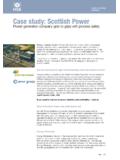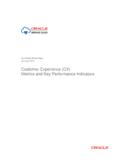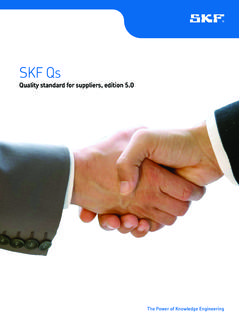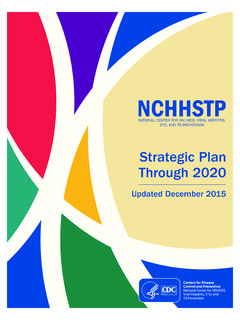Transcription of Revenue reckoning: a transformational new standard
1 IFRS PracticalMattersRevenue reckoning : a transformational new standardThe impact of the new IFRS standard extends far beyond the finance function What you need to know The International Accounting standards Board (IASB) and the Financial Accounting standards Board (FASB) have issued a comprehensive new Revenue recognition standard that will supercede nearly all existing Revenue requirements under IFRS and US GAAP. The effect on entities will vary, and some may face significant changes in Revenue recognition. Entities should now be assessing how they will be affected so they can prepare an implementation plan for the new standard .
2 The standard is effective for annual periods beginning on or after 1 January 2017, but early adoption is permitted under IFRS. OverviewIn May 2014, the IASB and the FASB (collectively, the Boards) jointly issued a comprehensive new Revenue recognition standard , IFRS 15 Revenue from Contracts with Customers. It will supercede nearly all existing Revenue recognition requirements under IFRS and US standard s core principle is that an entity will recognise Revenue when it transfers goods or services to customers in an amount that reflects the consideration to which the entity expects to be entitled in exchange for those goods or services.
3 This will require entities to use more judgement and make more estimates than under today s Revenue 2014 Entities reporting under IFRS will need to make more estimates and use more judgement than under the current Revenue recognition standard will apply from 1 January 2017 (or for annual and interim periods beginning after 15 December 2016 for public entities reporting under US GAAP). Early adoption is permitted under IFRS, but not for public entities reporting under US 15 is likely to affect the measurement, recognition and disclosure of Revenue , which is typically an entity s most important financial performance indicator.
4 It is the indicator most closely scrutinised by investors and analysts. Gaining an understanding of the effects of the new standard , providing early communication to stakeholders and advanced planning will be critical for a successful implementation. Entities that do not expect significant changes in the measurement and timing of Revenue recognition will, at the very least, need to validate their assumption. Entities will need to identify necessary changes to policies, procedures, internal controls and systems to ensure that Revenue transactions are appropriately evaluated through the lens of the new model.
5 In addition, entities will need to plan for the significantly expanded disclosure requirements. For entities that are going to experience a significant change in Revenue recognition as a result of the new standard , the implementation effort required will be considerable. Early preparation will be crucial for a smooth new five-step model for Revenue recognitionStep 1: Identify the contract(s) with customersStep 2: Define the performance obligations in each contractStep 3: Determine the transaction priceStep 4: Allocate the transaction price to the performance obligations in the contractStep 5: Recognise Revenue when (or as)
6 The entity satisfies a performance obligationNot just an accounting changeWith the new standard being applicable to virtually all entities, it is not surprising that changes to the accounting for Revenue could affect multiple business functions, as illustrated andcommunicationProcessesand systemsProjectmanagementBusinessoperatio nsManagementinformationInvestorrelations SectorissuesRevenuerecognitionimpactsBec ause of the potential wide-ranging effects of the new standard , the implementation effort should include functions outside of the finance department, including IT, legal, sales, marketing, human resources, investor relations and senior management.
7 A number of related workstreams should be considered in this effort, including: Accounting and financial reporting T a x Business processes and systems Change management, communication and trainingIn addition, it will be critical to have strong project management in order to coordinate the roles of the various business functions and to keep the workstreams running smoothly and on | Revenue reckoning : a transformational new standardImplementing accounting changeAdopting the new standard for the measurement and recognition of Revenue may seem daunting. It is important to apply a comprehensive methodology for implementing the accounting change.
8 Doing so will help you to adopt the standard in an organised and efficient manner that reduces risk and the possibility of costly errors and delays. A five-phase model for implementing accounting change in entities is recommended:DiagnosticObjectiveImplement ationDesignand planningSolutiondevelopmentPost-implemen tationIdentify accounting, reporting and tax differences and their consequences on business processes and IT systemsSet up projectinfrastucture andmanagement,including road map and changemanagementstrategyIdentify solutions,prepareimplementationplan and developsolutions acrosswork streamsApprove and roll out solutionsacrosswork streamsAddress deferreditems andtransition tooperational modelIn this publication, we focus on the diagnostic phase, or the starting point of the implementation process.
9 The remaining four phases are also vital to a successful implementation; however, they are influenced significantly by an entity s specific facts and circumstances and, critically, the output from the diagnostic phase for implementing accounting phaseThe diagnostic phase is perhaps the most critical of the five phases for implementing an accounting change because it will establish the foundation on which the remainder of the project is built. In this initial phase, an entity will need to determine the effect of the new standard on each of the entity s significant Revenue streams. 1. Setting the scopeTo identify significant and unique Revenue streams, an entity will need to look at its product and service offerings while considering the Revenue recognition standards and interpretations that it applies today.
10 Entities should also consider whether additional factors such as geography, type of contract or sales channels could affect their determination of significant and unique Revenue streams. 2. Determining the impactOnce the scoping is complete, an entity should apply the new standard to representative contracts within each Revenue stream, while considering the related effects on systems, processes, income taxes and change management. Please refer to our publication Applying IFRS: A closer look at the new Revenue recognition standard (June 2014, EYG No. AU2516) for sample procedures under each Significant judgements and estimatesDuring the diagnostic phase, an entity should identify the key judgements and estimates that it will be required to make under the new standard .
















